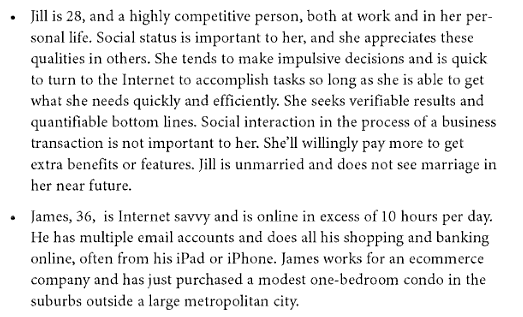In a previous blog post, Finding your voice: Content marketing dos, we mentioned the importance of content marketing, and how it is necessary to constantly publish content so that you are providing value to your clients, and so that search engines display your web content in organic search results. But, you may be wondering, “what should my content say?”
Granted, this will depend on your goals and your audience. In her book Content Marketing, digital marketing expert Rebecca Lieb suggests creating personas for the each of your target audience; boil down your customers into a group of individuals that represent your clientele. Creating personas will help you to segment your audience and understand what interests them. Only after you do this, will you be able to determine what types of content you should be sharing.
Write a short paragraph that tells the age, personality and interests of a specific client type. Below are two examples of persona types taken from Leib’s book, Content Marketing.

Don’t create content for everyone. Direct it at a specific person – direct it at Jill or James. If you truly know your audience, then you will be able to provide them with content that interests them.
Once you have determined whom you are speaking to, you can begin to write. There are three main categories of content.
1. Content that entertains.
What are people talking about at the water cooler? Usually it is the funny stories that they have heard, the stories that make them laugh and smile. So, let that be you!
READ MORE






